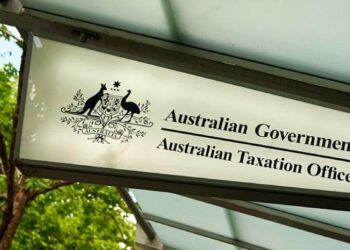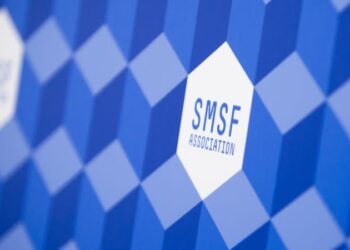From 1 October 2021, rollovers into or out of your SMSF can only be performed using SuperStream, according to the ATO. Additionally, certain release authorities may be processed in SuperStream.
In a recent technical online update, Heffron head of technical and education services Lyn Formica said from 1 October 2021, SMSFs using SuperStream need to consider an individual’s superannuation benefits are currently in a non-SMSF and they wish to roll over all or part to an SMSF from 1 October 2021.
Furthermore, this is so if an individual’s superannuation benefits are currently in an SMSF and they wish to roll over all or part to another SMSF from 1 October 2021, or an individual’s superannuation benefits are currently in an SMSF and they wish to roll over all or part to a non-SMSF (e.g. on wind-up of the SMSF) from 1 October 2021.
“While it won’t be compulsory to use SuperStream for SMSF rollovers until 1 October 2021, the various software providers and gateways are currently in the process of testing and transitioning to the new system. This means they may begin voluntarily using SuperStream for rollovers in or out of SMSFs well before the 30 September 2021 cut-off,” Ms Formica said.
Extending the SuperStream system to SMSF rollovers will mean a number of changes for practitioners, according to Ms Formica.
“For example, from 1 October 2021, it will no longer be acceptable to roll benefits out of an SMSF by sending a cheque and a paper rollover benefits statement to the receiving fund. Instead, the transfer of data (i.e. the information usually found on the rollover benefits statement) and the payment must happen electronically,” she explained.
“The impact is also likely to be greatest on SMSF administrators who do not use specialist SMSF accounting software.”
To ensure a successful transition, Ms Formica said SMSFs who are required to use SuperStream to receive contributions should have their systems well and truly bedded down, as those rules have been in place for many years.
“However, the new rules mean a greater number of SMSFs will need an ESA including any SMSF receiving rollovers into the fund (e.g. on establishment of the fund), and any SMSF rolling benefits out of the fund (e.g. on wind-up of the fund),” Ms Formica said.
“So, there are no delays, we suggest impacted SMSFs ensure they have access to an ESA as soon as the fund is established, and for existing funds, as soon as the decision to wind up is made.
“An ESA can be obtained for funds processed via specialist SMSF accounting software, the software provider, or for funds not processed via specialist SMSF accounting software, SMSF messaging providers (some providers will charge a fee and not all may provide the service for rollovers).
“There is currently no requirement for member contributions or contributions from related employers to SMSFs to be made via SuperStream and we are not aware of any plans to change that.”
SMSFs will also need to ensure the SMSF’s bank account details with ATO are up to date. Ms Formica noted that before rolling over benefits to another fund, the transferring fund is obliged to perform a number of checks designed to ensure the rollover is not part of an illegal early release scheme and that the member’s identity has not been compromised.
“One of these checks is ensuring that the receiving SMSF’s bank account details, as shown on the rollover request, match those held by the ATO. To avoid delays in the rollover process, SMSF trustees should ensure the fund’s bank account details held with the ATO are up to date,” she said.
Determining the best method for rollovers and being aware of time frame impacts
As there are a number of methods to approach rollovers, SMSFs can start preparing for and familiarising themselves with the new system to determine the best method for clients once the implementation begins.
Ms Formica said there are a number of ways for an individual to request the rollover of their benefits to another fund.
This includes via their myGov account (if requesting the transfer of their whole balance), by completing a paper form and lodging it with the transferring fund (if requesting the transfer of their whole balance), or contacting the transferring fund directly.
“If a rollover request is made via myGov, the ATO will verify the member’s identity and membership details before sending the information to the transferring fund for processing,” Ms Formica said.
“In contrast, if the rollover request is made using the paper form, the transferring fund will often need to seek further information from the member to confirm their identity, and if the receiving fund is an SMSF, confirm the fund’s bank account details.”
Meanwhile, SMSFs can expect the process for receiving a rollover into an SMSF via SuperStream to be similar to that for receiving contributions. That being said, Ms Formica noted they will need to ensure you understand how to process a rollover out of an SMSF via SuperStream particularly if the fund is using an external ESA.
“If you have only recently transitioned to using SMSF specialist software and were previously using an external ESA, it may be appropriate to change your funds’ ESA to gain the maximum benefit from your software. Using your software provider’s ESA will ensure the data can feed automatically to the relevant member account,” she explained.
It will also be crucial to be aware of the time frames for processing rollover requests out of SMSFs.
Ms Formica said, in theory, a written request to roll over out of an SMSF via SuperStream will need to be actioned no later than three business days after the trustee receives certain information [SIS Reg 6.34A]. In practice, however, she noted many SMSF trustees will struggle to comply with this time frame for a number of reasons.
“The legislation allows trustees to ask, and requires members to provide, certain information such as their personal details, information to confirm their identity, and details of the receiving fund. The ‘three business days’ rule commences on receipt of this information. However, to facilitate a rollover out of the fund, the SMSF trustee will still need to calculate the member’s balance at that time,” she said.
“The complexity of the fund’s transactions, whether those transactions are processed regularly etc will determine how quickly the SMSF trustee can calculate the member’s balance and action the rollover request.
“Furthermore, as many SMSFs hold relatively illiquid assets, if those assets need to be sold to allow for the rollover out, this can take some time. Even the process of selling listed securities can sometimes take more than three days.
“A member may also be seeking to roll over their benefits out of the SMSF due to a dispute with the trustees. A disgruntled trustee is unlikely to be any more co-operative with a three-business-day deadline than they are now.”


